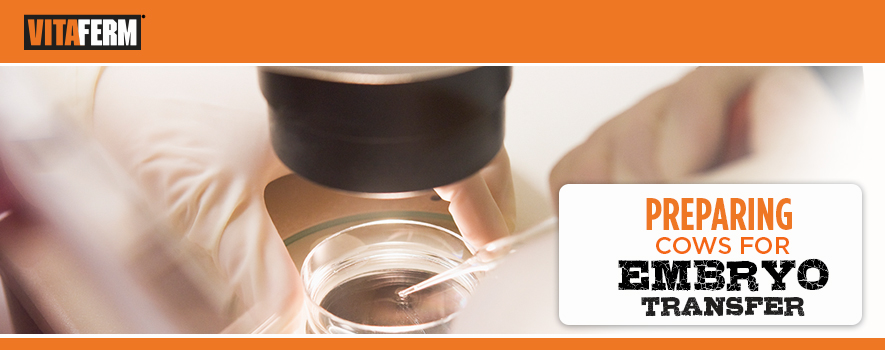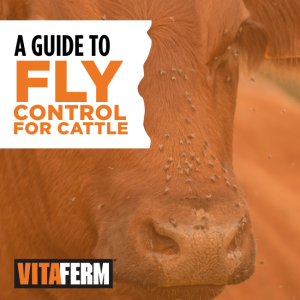
Embryo transfer (E.T.) is an important tool to propagate outstanding genetic influence within the herd, with the potential to produce multiple offspring of the same mating in the same year. Because of the time, labor and expense involved in creating these genetics, we reached out to Trans Ova Genetics, a leader in reproductive technologies, to provide useful information to prepare your cows for a successful E.T. program.
According to Trans Ova, successful E.T. programs require intensive management and attention to detail. The results you achieve are highly variable and the level of success is based on your ability to manage all aspects of the operation.
Get Your Recips Ready
Preparing recipient cows for their role of carrying and growing the embryo is not a lot different than preparing cows to be bred naturally. You want to keep them in a low-stress environment, be consistent in daily management practices, give all vaccinations prior to estrus and make sure their nutrition program is supplemented with high levels of trace minerals like copper, zinc and manganese that impact reproductive success.
“Nutrition is without a doubt one of the most important areas of donor and recipient management,” said Jon Schmidt, DVM and Chief Operations Officer at Trans Ova. “First of all, I believe the nutritional management of your cattle needs to be a year-long process. Attention should be placed on meeting their demands for the entire season including gestation and lactation.”
The most critical and demanding time however, includes the month before calving through the first three to four months after calving. This is the most stressful and nutritionally demanding time to allow that cow to produce a healthy calf via colostrum production, begin lactation to raise that calf and become pregnant.
Reproduction is not an essential process in survivability of that cow, and consequently suffers first if nutritional needs are not met. Maintenance and milk production will partition available energy supplies with reproduction suffering at their expense. Therefore, it is critical to meet their requirements. Ensure cows are fed a high-quality mineral especially one that optimizes zinc, selenium and copper as they are critical for successful embryo transfer outcomes. Avoid rations that are high in distiller’s byproducts or sulfur-containing forages. Avoid diets high in Urea.
Kevin Glaubius, Director of Nutrition for BioZyme® Inc., suggests increasing their plane of nutrition about 2-3 weeks prior to implanting the recips, and continuing this for 2-3 weeks after implanting during the calm low-stress period.
Glaubius recommends that 60 days prior to implanting the recips to start them on a high-quality supplement like VitaFerm® Concept•Aid®. The Concept•Aid provides them a reproductive safety net with increased levels of highly bioavailable trace minerals needed and has a high level of Vitamin E which serves as an antioxidant, strengthening the immune system and helping reduce stress. In addition to added trace minerals and vitamins, Concept•Aid, also provides Amaferm®, is a prebiotic designed to enhance digestibility by amplifying the nutrient supply for maximum performance. It is research-proven to increase intake, digestion and absorption.
It is also important to keep the recips at a moderate body condition score prior to implanting them. Glaubius suggests that a BCS of 5 to 5.5 is ideal, and if you do have a cow that is a little thin, consider adding energy to her diet a few months prior to the time of breeding. Learn more about body condition prior to calving here.
Water is another important component to keeping your recips healthy. Be sure the cows have continuous access to fresh, clean drinking water. Avoid water sources high in sulfates, nitrates or other dissolved solids. It is a good idea to test water sources to determine whether if you have any concerns about these.
Once you have implanted your recips, minimize their stress as much as possible. Don’t change their feeding or supplement program immediately. Keep them with the same pasture mates to avoid fighting and reestablishing pecking order. Avoid moving or hauling them until they have had a chance to settle. Trans Ova protocols suggest if you do need to transport the recips, to make any movement in the first two days after transfer. Nothing stressful should occur during the 12-15 day window (counting transfer day as day 7) when maternal recognition of pregnancy should occur. And, all stress should be kept at minimum until 30 days after the cows have been confirmed pregnant. For more on Trans Ova protocols for successful E.T., click here.
Donor Care
Donor cows are the cream of the crop, and often a challenge to keep at an ideal BCS of 4-6 because they are kept in smaller pens close to the barn and pampered with excessive high-quality feed. But remember, this pampering can lead to long-term fertility challenges.
Trans Ova cautions producers to stay away from either extreme of body condition. Overconditioning, especially of the donors that will be carried open for an extended period is detrimental to the overall success of E.T. Fat cattle also create an additional difficulty in the flushing and transfer procedures. It becomes an art to keep those donors in working condition especially after the calf is weaned.
Although you don’t want your donors to be too fat, you also want to make sure their nutritional needs are met during the stressful time of flushing. About 2-3 weeks prior to flushing, be sure to feed them 2-4 pounds of grain, per day. Once the eggs are collected, stop feeding them this extra grain.
Since donors are flushed several times throughout the year, it makes sense to keep them on Concept•Aid year-round to make sure they have the added nutrients they need to increase fertility. The Amaferm advantage in Concept•Aid will also help regulate their feed intake.
In addition to making sure your donors are on a high-level of nutrition but not over conditioned, make sure they are in overall good health. Before a donor begins E.T. protocols, make sure she is current on her vaccinations. Donors should not be treated with antibiotics during a set-up process, and modified-live vaccines should not be given within 30 days as they may inhibit reproductive performance.
Trans Ova also reminds producers to plan ahead when they are planning to flush a donor. Consult with your E.T. practitioner a few months in advance, as practitioners consider many factors when scheduling a donor. Factors such as age, breed, weight, body condition, date of last calving and previous reproductive history are all considered.
“If a donor has been flushed before, we take her previous flush stimulation and results into consideration when prescribing future schedules,” Dr. Schmidt said.
E.T. is a valuable genetic resource. Use your resource wisely by keeping your recips and donors on a nutritional program to optimize fertility.


